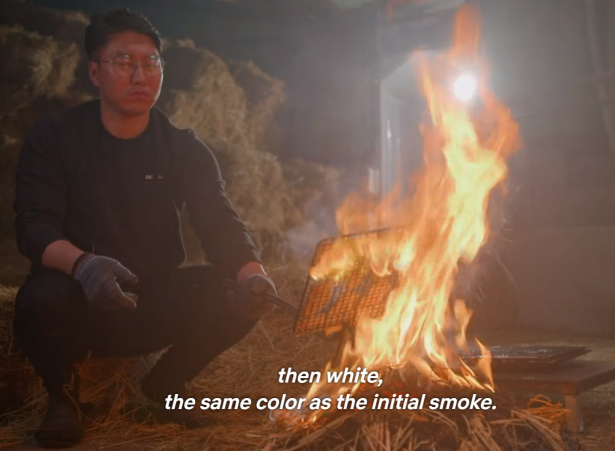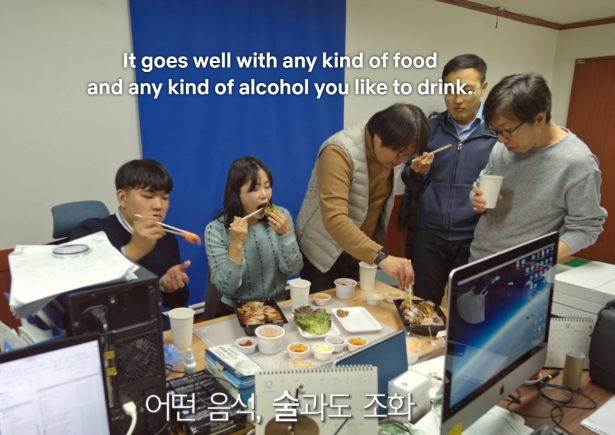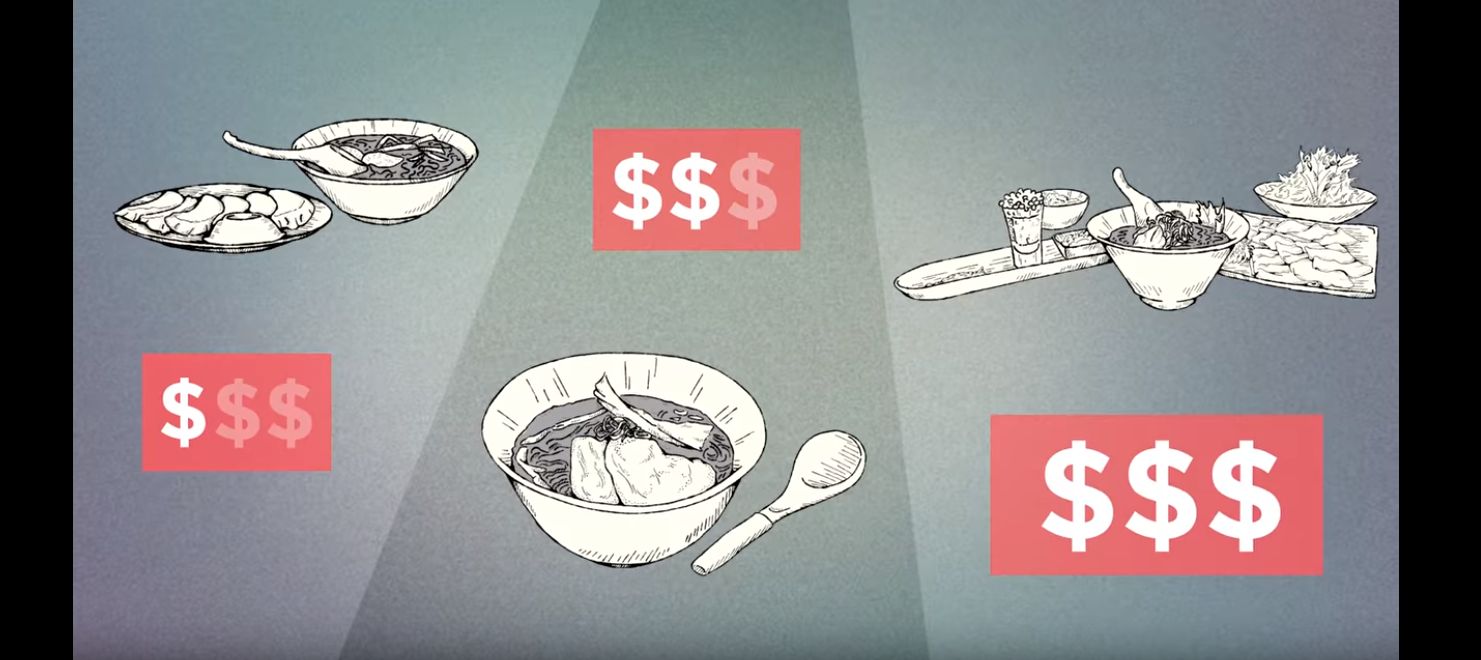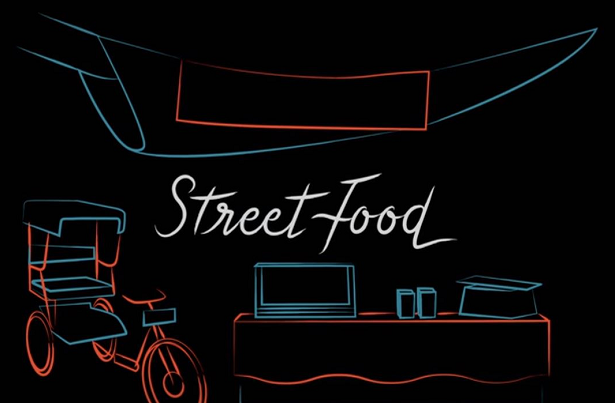Catastrophic Reviews – Korean Pork Belly Rhapsody

Why hello there, and welcome to Kitchen Catastrophe for a Catastrophic Review, where Jon consumes ever more niche content and describes it back to you. I’m your Rhyming Regurgitator (gross) Jon O’Guin, and today’s show of choice is…definitely something out of the ordinary. At least for our predominantly American readers. For any of our South Korean readers, I feel like it’s something far more normal. But that might be my bias of the shows I’ve seen. Anywho, enough jaw-jacking, let’s get to unpacking.
Rhapsody in Food
“Korean Pork Belly Rhapsody” is a Korean food show, produced by KBS1, which is…it’s hard to 100% break this down, but it’s basically half of Korean PBS. Like, PBS (the Public Broadcasting System) in America is a channel that focuses on…”programming for the betterment of the audience”, as it were: stuff like educational shows, both for children and adults, crafts-focused shows, documentaries, artistic performances (symphonies, plays, operas, etc. KBS (the KOREAN Broadcasting system) has taken on a similar ranger of material, but has split them into two channels: KBS1 is the more adult-oriented or high-brow channel, where you’ll find like, news broadcasts and talk shows, dramas and documentaries, while KBS 2 skews a little younger, with more child entertainment, younger dramas and so on.
And that context really helps flesh out understanding this show. As one reviewer put it, the show feels almost like a subtle ad campaign by the Korean pork industry: the shots of the sizzling pork are very enticing, and every person is having a GREAT time eating all this fried/roasted/boiled/grilled pork.
This is like, not even in the top 20 shots.
It also helps people contextualize what might feel like a jarring sense of “otherness” some viewers may experience: while available on American Netflix, this show is not made for Americans. It is not dubbed, and does not subtitle everything: you’ll get all the things people say, and the banner summations that splash onto the screen from time to time (more on that in a bit) (editor’s note: We actually never get back to it. But to summarize: in case you’re unaware of it, Asian television, especially educational TV and documentaries, has a habit of recapping phrases or ideas from the video in bold text on the screen. I’m pretty sure this is a market factor: like, I think a LOT of Asian TVs are left running in places of business, with the sound low or off, maybe with subtitles on, for people to kind of glance at when they have a minute. So you can look up, and the screen says “A wild taste” or “Pork Fat the engine of Korean industrialization!” Or, as it does in the second to last picture of this post “Good with any food or drink”. So you can get the gist of the point being made, without having to turn up the volume or stop taking an order or whatever. ), but, for instance, here’s the introduction we get to the host of the show.
Technically we meet him a little earlier, this is just where they introduce him to us. In an AMAZING bland way, given how focused South Korea is on appearances.
That hangul to the right of him is a label: “Baek Jong-won (or, as the Subtitles will EVENTUALLY call him, Paik Jong-won), Korean Pork Belly Rhapsody presenter”. That’s it. It is NOT translated for us, and it’s only thanks to the aforementioned banner announcements in a minute or two that we’re given his name. But, in KBS’s defense: Baek Jong-won has been making food shows in Korea for 11 years. He DOESN’T need a big introduction for that audience, since he’s fairly recognizable. It’s just worth noting that this continues for a LOT of presenters and side-personalities. There’s a core group of people who get their names and titles translated for the audience, but a lot of other people don’t. So there will be, for viewers who don’t read Korean, a kind of “okay, here’s this new person” energy they’ll have to deal with.
In fact, in one regard, which provided a moment of humor for me, it really felt like the show went out of its way to highlight that it’s not for English speakers: about 8 minutes in, they cut to a couple English speaking people to highlight how, to non-Koreans, the in-the-table barbecue system is surprising and new, but provides great results. And in the middle of the first line of English in the show, spoken by (I believe) a German man (Oh, look he has a name tag I didn’t see the first time. Google Lens to translate…”Florian, German”. Nice. It’s the higher S, the more v-like-w, and the darker vowels before Rs that gave it away) out of nowhere, he drops the Korean word for (specifically grilled) pork belly (ssamgyeopsal), instead of the English “pork belly”, which felt like either a script mandate, or a little touch of German precision. Either way, it was a distinctly non-English linguistic trick.
Getting to the Meat of the Matter
But, given that the focus is not on the people, but the FOOD, I don’t think it’s too great a sacrifice to make that the people’s names come and go, and the language isn’t mine. And the show is definitely about Pork. More specifically, at least for the first episode, Pork Belly. The series as a whole (made of just 2 episodes) covers pork more broadly, but the first episode is focused on South Korea’s love of Pork Belly: how it became a go-to meal, how unique their approach to it is, the flavors and methods used to cook it, its importance in their culture, just an exhaustive look at the power of the pig in Korean cuisine today.
Apparently they used to harvest it from Calamity Ganon?
For the rough basics: Korean and Chinese culture has long had a strong relationship with pigs, as they’re a very easy live-stock animal to care for, and they have some unique properties: thanks to their thick layer of fat, many pigs are, while not technically immune, functionally impossible to poison with snake venom: the fangs can’t pierce the fat layer, so the bite can’t spread into the blood. Meaning snakes are more likely to be killed and eaten by pigs than pigs are to die from snake bites, making them a valuable animal to keep near your home: any snakes trying to infiltrate your house have to deal with your porcine protectors.
On top of this, as Korea started really industrializing and urbanizing in the 1960’s and 70’s, the price of beef skyrocketed, due to limited imports, limited range for cattle-raising, and so on. But this was also as in-table barbecuing took off. The result? More pork consumption. Workers wanted meat and fat, pigs breed fast and fatten quickly, boom boom. In 2016, Korean’s main agricultural product shifted, for the first time in the history of the nation, from rice to pork. Driven HEAVILY by the high demand for pork belly. Indeed, the show explains, South imports TONS of pork from around the world: South America, North America, Europe, it all goes to them. Fresh pork belly made up, in 2015, 59% of the average Korean’s daily MEAT consumption.
Fruit, veg, slabs of meat. It’s an appealing pitch.
And…that’s a basic idea of what the show’s about. It really is just like, a documentary explaining all sorts of details about pork in Korea, with a heavy initial focus on pork belly. It’s almost a set of spoilers to talk about the various topics covered, because that’s the basics of the show, but for a rough overview:
The show opens with a rather unique form of pork cooking, “samgut” style, a small village where they do a form of deep-earth STEAMING: they make hemp clothes, which have to be steamed, so they added this system of laying in a slaughtered pig to be cooked in the steaming pit too. Then the whole thing is covered with dirt, which is occasionally pierced, to add water, with explosive results.
This may be hard to believe, but I assure you, they make this erupting mud hole look pretty damn cool.
From there, we get a basic idea of the Korean love of pork belly, their consumption rates. Then Baek takes us on a butcher’s view of the pig, discussing how little of a pig carcass is pork belly. After that comes the historical perspective: ancient cookbooks, the growth of the 70’s.
Baek takes us to a restaurant he used to eat at, and how, in the 80’s, restaurants relied on frozen pork belly. The chef explains her preferred thickness for frozen pork belly, Baek eats his order of pork ssam (a kind of lettuce wrap you build yourself from the grilled meat, vegetables, and seasonings) and explains the nuances of the flavor. From there, they discuss how the grills have changed over time, which leads into the next segment, about grill creation: how over the past 40 years, there have been numerous waves of different shapes and styles of grills to be “in”. For a while, it’s all rounded “cauldron lid” grills, then it’s iron grills designed to look like a worn river stone. There are literal thousands of patented grill designs in the country, including this beauty.
TENNIS RACKET GRILL, BABY. This is mankind’s greatest invention.
From there, came explosions in marinating pork belly, or making wide arrays of sauce to serve with it, or fermenting/aging it. Just as we dry-age beef steaks, so to do Korean chefs dry and/or wet-age pork belly. One chef has (somewhat insane) “one year aged” pork belly: both wet AND dry aged, into something that looks closer to salami than steak.
I mean, THIS part looks like steak, which is, honestly, still pretty amazing given that this is basically a pork chop.
And it…just keeps going like that. You get 3 minutes, 5 minutes on a given topic or restaurant, you learn about this regional style, or this chef’s personal journey, and then you keep going, keep moving, because there’s so much to cover.
Did you know South Korea makes up 90% of the global butane gas market? Because they do, in order to power the millions of gas-grills at restaurants and homes around the nation. Oh, but if we’re talking about fuel, we should highlight the charcoal makers that create the real good charcoal that can’t be beat for smoky flavor. Or there’s one town where they grill their pork belly in left-over stalks from rice-harvesting.
Supposedly, this guy’s grandfather came up with the idea while fishing. This is another DYNAMITE visual segment.
It’s like if you had me binge the entire nation’s relationship with pork, gave me cocaine, and demanded I explain it to you: there’s almost TOO MUCH interesting and cool information coming at you, as segment after vignette layers on more nuance, more meaning, a broader understanding.
Some Structure, and a Summation
The first episode culminates with something approaching a thesis; Baek brings together a variety of people from various walks of life: a K-Pop singer, a cartoonist, a Meat Marketer, a German and a Frenchman (really, that’s not a bit, he brings in a German writer and a French-born TV personality/breakdancer who looks like he could play Nightwing (seriously, google Robin Deiana…and ignore the pictures where he’s got Drake and Josh hair.)) and walks them through how the same cut, from different breeds of pigs, taste differently. Not necessarily “better” or “worse”, but “this one is chewier” “this one tastes leaner/fresher”.
And its from that point that we really get into the second episode, and its “point”. The Second episode is about the rest of the pig. Because, as people around the world know: pigs are supremely edible. A phrase I learned as a kid was “every part except the oink”, which is ALSO a phrase in Okinawa, Japan. (I can’t tell who came up with it first, but I assure you, this will haunt me until I do.) And South Korea does have something of a problem: they’re eating so much pork belly...what about the rest of the pig? How can they ensure they’re making great cuisine from every part? Well, that’s the question this episode answers: they go to a restaurant where one woman produces 10 distinct “cuts” of pork from the head. Snout, ear, earhole, jowl, etc etc. They discuss how jokbal, the pork trotters I highlighted a couple weeks ago, have exploded in popularity in the last few years because they’re very easy and cheap to deliver.
These are also selling points. Baically, jokbal is like, the Korean equivalent of “order a couple pizzas” in terms of “everyone’s okay with it, and it’s very easy.”
They talk about sundae, pork blood sausage, and pork-bone soups. They talk about a pair of sisters: one runs the pig farm, one runs the restaurant, and how they’re exploring new recipes and flavors to get people to eat the ham of their pigs. They talk more deeply about the history with pigs, especially on Jeju island, the home of the last remaining purely Korean pig breeds, where custom says that at every funeral and wedding, a pig must be slaughtered, and all the various dishes they make for those events from the pig.
Baek unveils dishes he’s hoping to make more popular: braised pork tail, crispy-baked pork belly, pork jowl-bacon (there are just a FEW slices of jowl per pig that are almost perfect replicas of the striated fat and meat you get in the belly), and talks about how Korea, as a culture, needs to broaden these regional dishes, and these different meats. And even create fusions: take ideas from other countries, in order to make great dishes out of the pork they have, if they want to keep it affordable and sustainable.
Yes, that word is correct :their solution to “how do we use ham to make pork cheaper” was ‘what if we re-make JAMON IBERICO?”
The show is...a lot. You’re essentially main-lining decades of pork facts, culinary evolution, national history, all condensed into around 95 minutes for the two episodes combined. I certainly had fun: there’s tons of shots of beautiful looking pork, there’s a lot of interesting info about Korea and its food history. AND, if you like it, it already has a sequel! KPBR came out in January of 2021, and a follow-up, “Korean Cold Noodle Rhapsody” came out around July or August.
So if you’ve got some time, and want an hour and a half of shot after shot of pork, veggies, and people excited about the previous two things, I’d definitely give it a shot.
MONDAY: IF THINGS GO WELL, A DISH THAT’S WEARING A DISGUISE, FRESH OUT OF THE FRYER FOR HALLOWEEN. IF NOT…SEMI-MEXICAN PASTA.
THURDAY: IF THINGS GO WELL, MAYBE A LITTLE TRIP I TOOK. IF NOT…I REALLY HAVE NO IDEA.















